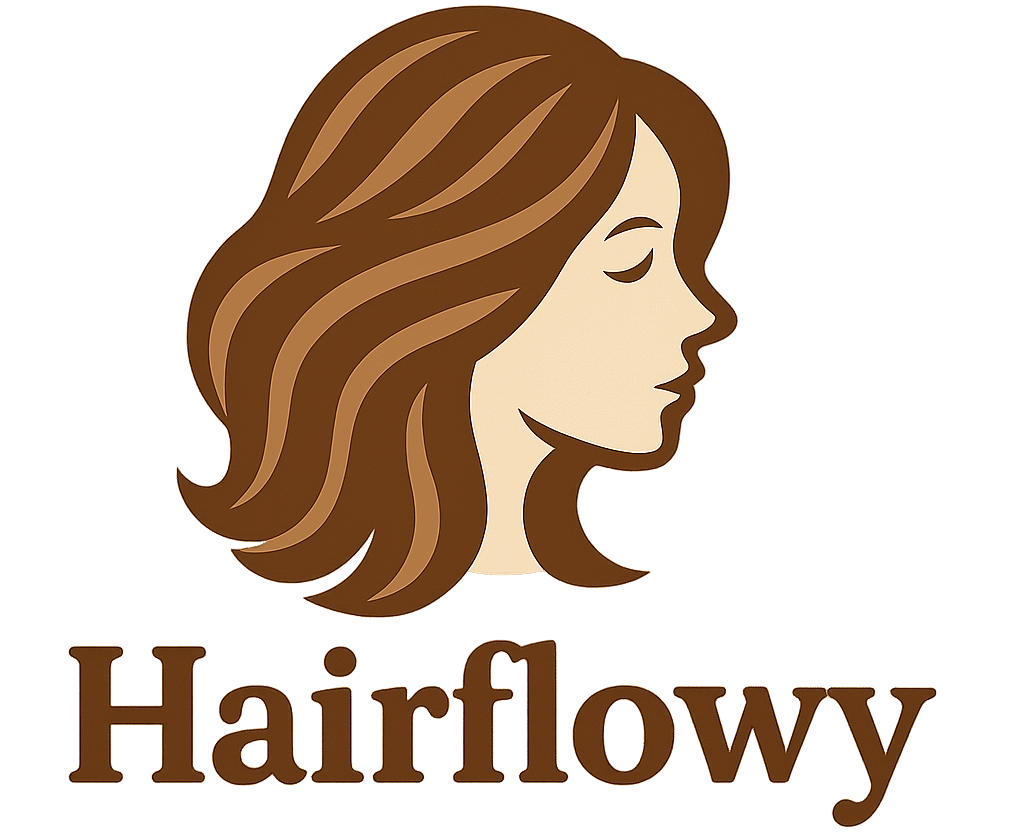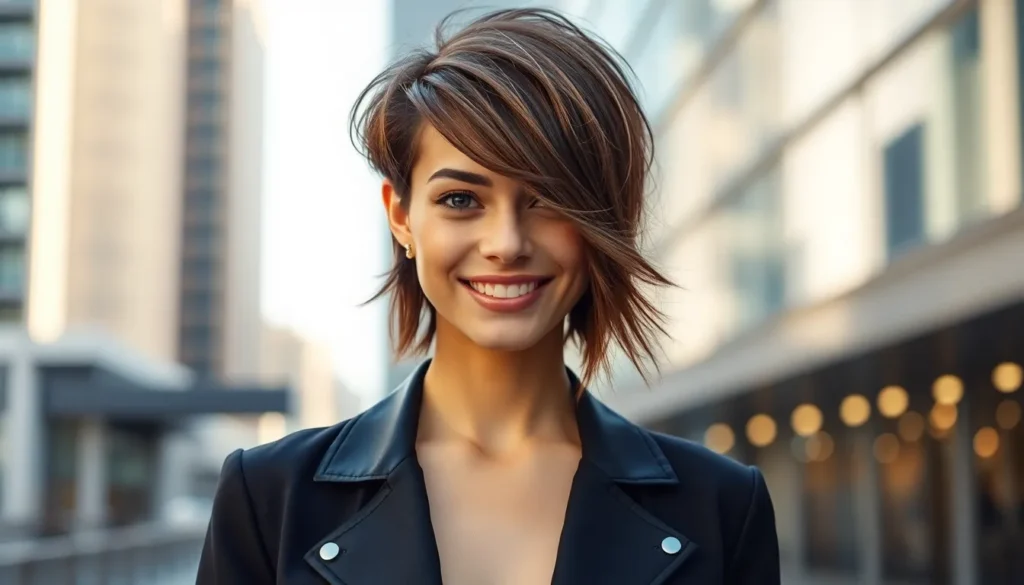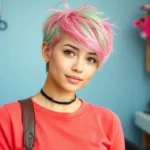We’ve all admired those effortlessly chic women who rock the perfect balance between short and sweet – that’s the magic of long pixie hairstyles. These versatile cuts offer the best of both worlds: the low-maintenance appeal of short hair with enough length to style and play with different looks.
Long pixie cuts aren’t just a trend – they’re a lifestyle choice that screams confidence and sophistication. Whether you’re dealing with fine hair that needs volume or thick locks that require taming, these styles work beautifully across all hair types and face shapes. From tousled and textured to sleek and polished, the styling possibilities are endless.
We’re here to show you why long pixie hairstyles deserve a spot at the top of your hair inspiration board. Let’s explore the most flattering cuts, styling techniques, and maintenance tips that’ll help you achieve that perfectly imperfect pixie look that turns heads wherever you go.
What Are Long Pixie Hairstyles and Why They’re Trending
Long pixie hairstyles represent a perfect middle ground between traditional pixie cuts and bob haircuts, typically featuring hair that ranges from 2 to 4 inches in length. We define these cuts as having short back and sides with longer layers on top and around the crown area, creating dimension and movement that shorter pixies can’t achieve.
Key characteristics of long pixie hairstyles include:
- Graduated layers that add texture and volume to fine hair types
- Asymmetrical elements like side-swept bangs or uneven lengths for visual interest
- Versatile styling options from sleek and polished to tousled and textured
- Face-framing pieces that soften angular features and enhance bone structure
Celebrity influence drives much of the current popularity surge we’re seeing with long pixie cuts. Stars like Emma Watson, Charlize Theron, and Scarlett Johansson have showcased how these styles can look both sophisticated and edgy, inspiring millions of women to embrace shorter lengths.
Social media platforms amplify this trend through transformation videos and styling tutorials that demonstrate the versatility of long pixie hairstyles. We see consistent engagement on Instagram and TikTok posts featuring pixie makeovers, with hashtags like #pixiecut and #longpixie generating millions of views weekly.
The trending factors behind long pixie popularity include:
| Factor | Impact Level | Reason |
|---|---|---|
| Low maintenance routine | High | Reduces daily styling time by 60-75% |
| Professional appearance | High | Suitable for corporate and creative environments |
| Seasonal adaptability | Medium | Works well in both summer heat and winter styling |
| Age versatility | High | Flatters women from their 20s through 60s+ |
Modern hair texture techniques make long pixie cuts more accessible than ever before. Stylists now use point cutting, razor cutting, and layering methods that create natural movement and reduce the need for daily styling products or tools.
We’re also seeing increased demand because these cuts work exceptionally well with natural hair textures, from straight and fine hair to wavy and thick hair types. The longer length provides enough weight to control cowlicks and natural growth patterns that can make shorter pixies challenging to maintain.
Classic Long Pixie with Side-Swept Bangs

The classic long pixie with side-swept bangs represents one of the most elegant and sophisticated variations in this hairstyle category. This versatile style adapts beautifully to various hair textures and face shapes while maintaining the chic appeal that makes long pixie cuts so popular.
How to Style Side-Swept Bangs
Styling side-swept bangs requires the right technique and products for a polished finish. We recommend starting with a small amount of styling cream or mousse applied to damp bangs to add texture and manageability.
Using your fingers works better than a brush for achieving that natural, effortless sweep. Gently guide the bangs to one side while blow-drying on a low heat setting. Light hold hairspray applied after styling keeps the bangs in place throughout the day without creating stiffness.
Texturizing products can enhance the natural movement of your bangs, especially when you want to add dimension to the overall look. For best results, apply product sparingly to avoid weighing down the delicate bang area.
Best Face Shapes for This Look
Different face shapes benefit uniquely from the classic long pixie with side-swept bangs:
| Face Shape | Benefits |
|---|---|
| Oval | Balanced proportions make this an ideal canvas for the style |
| Heart-Shaped | Side-swept bangs soften angular features at the forehead |
| Round | Longer layers add vertical length while bangs create a slimming effect |
Oval faces work exceptionally well with this cut because the balanced proportions complement both the pixie’s structure and the flowing bangs. Heart-shaped faces gain important benefit from how side-swept bangs soften the angularity around the forehead area.
Round faces see dramatic improvement as the longer pixie layers create vertical lines that elongate the appearance, while the diagonal sweep of the bangs adds asymmetry that breaks up circular features.
Textured Long Pixie with Layers

Textured long pixie cuts with layers represent the perfect evolution from classic styles, offering enhanced dimension and movement. We’ve found that razored layers work exceptionally well for creating this coveted textured appearance, particularly for those with fine hair who want to maximize volume and visual interest.
Creating Volume with Layered Cuts
Layered cuts transform flat pixie styles into voluminous masterpieces by strategically distributing hair weight throughout the cut. We recommend focusing on graduated layers that start shorter at the back and gradually increase in length toward the crown, allowing the top sections to appear fuller and more ever-changing.
Strategic layer placement creates the illusion of thicker hair by preventing weight from pulling down at a single point. Professional stylists often use point cutting techniques to soften harsh lines while maintaining the structural integrity of the cut.
Styling techniques amplify the natural volume created by layered cuts:
- Use a round brush with your blow dryer to lift hair from the roots
- Direct airflow upward and outward to maximize lift
- Focus on the crown area where layers naturally create the most volume
- Apply heat protectant before styling to maintain hair health
Root lifting methods work particularly well with layered pixie cuts since the varied lengths catch and hold volume more effectively than blunt cuts.
Styling Products for Textured Looks
Styling products make the difference between ordinary layered cuts and professionally textured styles that turn heads. We’ve tested countless formulations to identify the most effective products for achieving that perfectly tousled, dimensional look.
Essential texturizing products for long pixie layers include:
| Product Type | Primary Function | Best Application Method |
|---|---|---|
| Texturizing sprays | Add volume and grit | Apply to damp hair before styling |
| Dry shampoo | Absorb oil and create texture | Use on day two or three hair |
| Styling cream | Define layers with flexible hold | Work through damp hair with fingers |
| Mousse | Provide lightweight volume | Distribute evenly from roots to ends |
Application techniques maximize product effectiveness while maintaining natural movement. Start with smaller amounts than you think you need, building coverage gradually to avoid weighing down the layers.
Texturizing sprays work best when applied to slightly damp hair, creating grip and separation that enhances the dimensional quality of layered cuts. We recommend misting these products 6 to 8 inches away from your head for even distribution.
Styling cream formulations help define individual layers without creating stiffness, allowing you to scrunch and tousle the hair for that effortlessly textured appearance that makes long pixie cuts so appealing.
Asymmetrical Long Pixie Cut

Asymmetrical long pixie cuts bring edgy sophistication to the classic style through intentionally uneven lengths that create visual drama and movement.
Understanding the Asymmetrical Design
Asymmetrical designs feature deliberate length variations that typically showcase one side shorter than the other, creating ever-changing contrast within the cut. We find this approach particularly effective because it combines short and long layers strategically to enhance facial features and add visual interest.
Heart-shaped and oval faces benefit most from asymmetrical long pixie cuts, as the uneven lengths help balance proportions and soften angular features. The longer side draws attention to your best features while the shorter side creates definition around the jawline and cheekbones.
Versatility becomes a major advantage when choosing asymmetrical designs, since you can style the longer sections in multiple ways while maintaining the pixie cut’s signature low maintenance appeal. This flexibility allows you to switch between sleek, professional looks and tousled, casual styles depending on the occasion.
Maintenance Tips for Uneven Lengths
Schedule regular trims every 4-6 weeks to maintain the asymmetrical shape and prevent uneven growth patterns that can disrupt the intentional design. Thick hair requires more frequent maintenance to preserve the cut’s precision and prevent the style from losing its balanced proportions.
Apply sulfate-free shampoos specifically formulated for your hair type to maintain health and manageability without stripping natural oils. We recommend gentle cleansing products that won’t weigh down the shorter sections while keeping longer pieces properly nourished.
Use non-directional blow-drying techniques to add volume and control throughout the asymmetrical cut, ensuring both short and long sections maintain their intended shape. This method prevents the hair from falling flat and helps maintain the cut’s ever-changing visual appeal.
Secure longer sections with bobby pins or small hair ties when you need a more polished appearance or want to emphasize the shorter side’s definition. These styling tools give you control over how dramatically you want to showcase the asymmetrical elements.
Protect your hair with satin or silk accessories during sleep to reduce frizz and breakage, particularly important for maintaining the precise lines that make asymmetrical cuts so striking. These materials create less friction than cotton, helping preserve your style overnight.
Maintain proper hydration with deep conditioning treatments once monthly to prevent dryness and breakage that can make uneven lengths appear damaged rather than intentionally styled. Well-moisturized hair holds the asymmetrical shape better and looks healthier overall.
Long Pixie with Undercut Details

Long pixie cuts with undercut details merge feminine elegance with bold edge, creating versatile styles that work beautifully for various hair textures and face shapes.
Different Undercut Patterns to Try
Contrasting layers deliver maximum visual impact by pairing short undercut sections with longer textured pieces on top. We love how this combination enhances femininity while maintaining the edgy appeal of undercut styling with bangs.
Curly pixie undercuts amplify natural volume and create flirty movement through the hair. Apply gel or cream to define your curls and embrace the voluminous bangs that frame your face beautifully.
Asymmetrical undercuts showcase shaved sides and back sections paired with deliberately uneven layers on top. This pattern works exceptionally well if you have plenty of hair to style and want to create dramatic visual interest.
How to Grow Out an Undercut Gracefully
Regular trims form the foundation of successful undercut growth, preventing awkward phases and maintaining even hair development throughout the transition period.
Styling tools like the ghd Mini Styler help tame rebellious sections during growth phases. We recommend using these compact tools to create smooth, polished looks when dealing with uneven lengths.
Product application becomes crucial during the growing out process. Texturizing sprays and flexible hairsprays help manage and style transitioning hair while maintaining volume and texture as your undercut develops into longer lengths.
Maintenance scheduling every 4 to 6 weeks keeps your growing undercut looking intentional rather than unkempt. Book appointments with your stylist to blend growing sections seamlessly with existing longer layers.
Curly Long Pixie Hairstyles

Curly long pixie hairstyles celebrate your natural texture while providing the perfect balance between manageable length and stunning volume. These cuts work exceptionally well for improving your natural curl patterns by removing excess weight that can pull curls down.
Improving Natural Curl Patterns
Point cutting techniques are essential for bringing out your curl’s natural bounce and movement. This specialized cutting method removes bulk strategically while preserving the integrity of each curl formation.
Air drying becomes your best friend when working with curly long pixie styles. We recommend gently scrunching your hair with a microfiber towel to remove excess moisture without disturbing the curl pattern.
Diffuser attachments offer controlled drying when you’re pressed for time. Set your blow dryer to low heat and speed settings to prevent frizz while maintaining your curls’ natural shape and definition.
Curl defining creams should be applied to damp hair using the scrunching method. Start from the ends and work your way up to the roots for even distribution and maximum curl enhancement.
Strategic layering creates dimension without sacrificing your curl’s natural volume. The graduated layers in a long pixie cut allow each curl to spring freely while maintaining an overall cohesive shape.
Products for Curly Pixie Maintenance
Sulfate free shampoos are non negotiable for maintaining healthy curls in your long pixie cut. These gentle formulas cleanse without stripping your hair’s natural oils that keep curls moisturized and defined.
Lightweight conditioners provide essential moisture without weighing down your curls. Apply from mid length to ends, avoiding the roots to prevent your pixie from looking flat or greasy.
Curl defining creams work best when applied to towel dried hair using prayer hands technique. These products help separate curls while reducing frizz and adding shine to your textured pixie style.
Leave in treatments protect your curls from environmental damage while providing ongoing moisture throughout the day. Choose alcohol free formulas to prevent dryness and brittleness in your shorter lengths.
Microfiber towels replace traditional terry cloth towels to minimize friction and reduce frizz formation. Gently press and scrunch your curls rather than rubbing to maintain their natural pattern and prevent breakage.
Straight Long Pixie with Blunt Edges
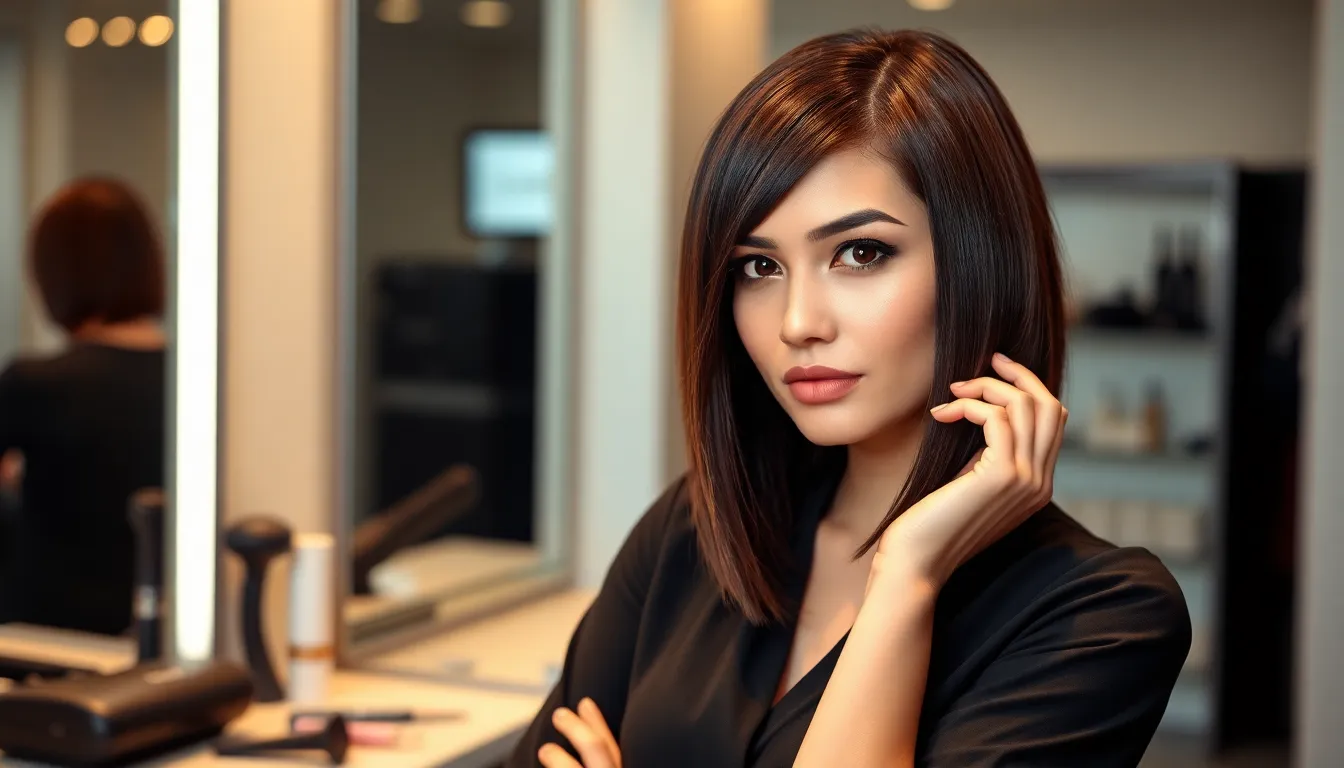
Moving from textured curls to sleek sophistication, straight long pixie cuts with blunt edges deliver modern elegance perfect for professional settings. Sharp, precise lines create a polished finish that enhances facial structure while maintaining the versatile length of long pixie styles.
Achieving Pin-Straight Texture
Transform naturally textured hair into silky straight strands using proper heat styling techniques that protect your hair’s integrity. Start by applying heat protectant spray throughout damp hair to create a barrier against thermal damage. Section your hair into manageable pieces based on thickness and length for thorough coverage.
Clamp your flat iron close to the roots and glide it smoothly down each section in one continuous motion. Keep the iron moving at a steady pace to prevent hot spots that can cause damage or uneven results. Work through each section systematically from bottom layers to top for complete straightening coverage.
Seal the cuticle after straightening by running the flat iron over each section one final time at a lower temperature setting. This technique locks in the straight texture while adding brilliant shine to your blunt edged pixie cut.
Tools Needed for Sleek Styling
Essential equipment creates the foundation for achieving salon quality straight pixie results at home:
| Tool | Purpose | Key Feature |
|---|---|---|
| Flat Iron | Straightens hair strands | Ceramic or titanium plates for even heat distribution |
| Blow Dryer | Removes moisture quickly | Multiple heat and speed settings for control |
| Heat Protectant Spray | Prevents thermal damage | Creates protective barrier on hair shaft |
| Hair Serum or Oil | Adds shine and smoothness | Lightweight formula that won’t weigh down short hair |
Invest in a high quality flat iron with adjustable temperature settings to accommodate your hair’s exact needs. Fine hair requires lower heat settings around 250°F while thicker textures may need temperatures up to 400°F for effective straightening.
Select a blow dryer with ionic technology to reduce frizz and cut drying time significantly. The negative ions break down water molecules faster while smoothing the hair cuticle for enhanced shine in your straight pixie style.
Apply hair serum sparingly to avoid weighing down shorter lengths that characterize long pixie cuts. Focus product application on mid lengths and ends where hair tends to be dryest and most prone to frizz.
Long Pixie with Highlights and Color
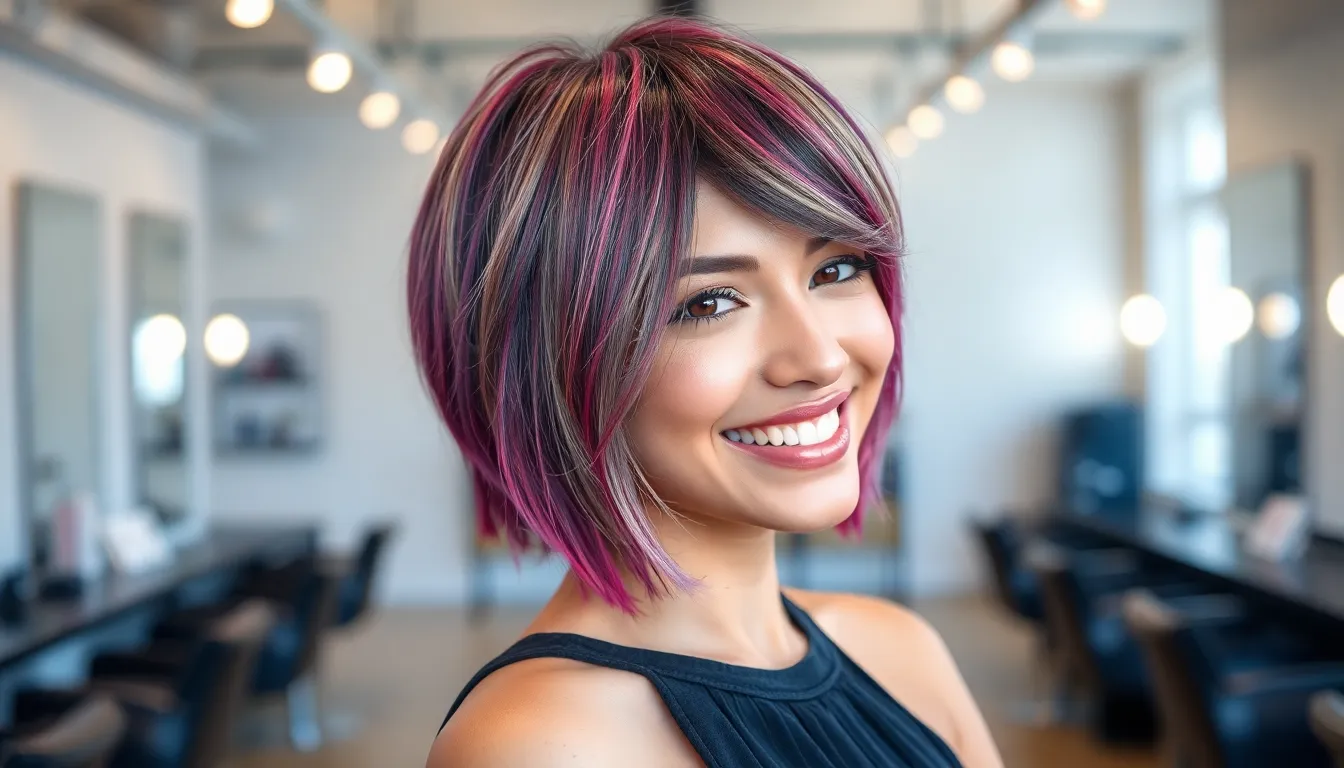
Color transforms your long pixie from stylish to stunning, creating dimension that enhances the cut’s natural movement and texture.
Popular Color Combinations
Balayage highlights create the most natural looking dimension for long pixie cuts. We recommend combining your natural base with subtle highlights that are 2-3 shades lighter to enhance the layered structure without overwhelming the cut’s delicate proportions.
Ombre and gradual color transitions work beautifully with longer pixie lengths. Starting with darker roots and gradually lightening toward the ends creates visual interest while maintaining a sophisticated appearance that’s perfect for professional settings.
Monochromatic shading offers a harmonious approach to pixie coloring. Using different tones of the same color family creates depth and cohesiveness that complements the cut’s architectural lines without competing for attention.
Dimensional brunettes featuring rich chocolate bases with caramel or honey tones add warmth and movement. These combinations particularly flatter the face framing pieces that make long pixie cuts so versatile.
Platinum and silver tones create striking contrast against darker natural bases. These high impact colors work exceptionally well with asymmetrical long pixie cuts, emphasizing the dramatic length variations.
Maintaining Colored Pixie Hair
Schedule regular trims every 4-6 weeks to maintain both your cut’s shape and color’s vibrancy. Frequent trimming prevents split ends that can make colored hair appear dull and lifeless.
Choose sulfate-free shampoos specifically formulated for color treated hair. These gentle formulas avoid stripping natural oils and help preserve your color investment while keeping your pixie’s texture healthy.
Focus hydration on your hair’s ends where color processing can cause the most damage. Apply leave-in treatments or lightweight oils to the longer sections of your pixie to prevent frizz and maintain smooth texture.
Use satin or silk accessories while sleeping to reduce friction that can cause color fading and breakage. These protective materials help maintain your pixie’s shape overnight while preserving color vibrancy.
Treat your hair to deep conditioning once monthly to replenish moisture lost during the coloring process. This preventive care keeps your long pixie looking salon fresh between appointments.
Apply heat protectant before using any styling tools on your colored pixie. The combination of chemical processing and heat styling can be particularly damaging to shorter hair lengths that are already more fragile.
Face-Framing Long Pixie Cuts

Face-framing layers create the perfect balance between the structured elegance of a pixie cut and the softening effect of strategic length placement. These carefully positioned layers sit around the jawline and sides of the face to enhance your natural bone structure while maintaining the chic sophistication that makes long pixies so appealing.
Customizing for Different Face Shapes
Oval faces can accommodate virtually any face-framing approach, making this the most versatile canvas for experimentation. We recommend shorter layers in the front paired with longer sections in the back to showcase your balanced proportions. This combination creates beautiful movement while highlighting your naturally harmonious features.
Round faces benefit tremendously from longer layers that create vertical length and visual balance. Avoid blunt cuts that emphasize width, and instead opt for graduated layers that elongate your silhouette. These strategic cuts draw attention upward while creating the illusion of added height and definition.
Heart-shaped faces look stunning with side-swept bangs combined with longer layers positioned around the jawline. This placement helps balance a broader forehead while adding gentle volume to the lower portion of your face. The key lies in creating harmony between your upper and lower facial features through thoughtful layer placement.
Square faces require soft, wispy layers that counteract angular jawlines and create feminine movement. We suggest avoiding harsh, geometric cuts that mirror your natural bone structure. Instead, embrace flowing layers that soften your strong features while maintaining the sophisticated edge of your pixie style.
Styling Techniques for Face-Framing Layers
Beachy waves transform face-framing layers into effortlessly tousled perfection using texturizing spray applied to damp hair. Scrunch sections while air drying or use a diffuser attachment to enhance your hair’s natural texture. This technique creates relaxed movement that beautifully showcases your layered structure.
Side parting adds instant femininity to your long pixie while drawing attention to your best facial features. Create a deep side part and sweep longer sections across your forehead for a soft, romantic effect. This simple adjustment can completely transform your look from edgy to elegant in seconds.
Razored layers deliver exceptional volume and texture by using specialized cutting techniques at the crown area. These precision cuts create lift and movement that’s particularly effective for fine hair types. The result is enhanced dimension that makes your face-framing layers appear fuller and more ever-changing.
Finger styling maintains the natural, lived-in appearance that makes face-framing pixies so appealing. Apply a small amount of styling cream to your fingertips and gently tousle your layers into place. This hands-on approach preserves the organic movement of your cut while avoiding the stiffness that can come from over-styling with brushes or combs.
How to Transition from Short to Long Pixie

Transitioning from a cropped pixie to a longer version requires patience and strategic approach. We’ll guide you through each phase of the growth process with practical tips for maintaining style throughout the journey.
Growing Out Timeline Expectations
Months 0-3 mark the most challenging phase when your hair begins growing but may appear puffy or spiky. Styling products become your best friends during this awkward stage, helping manage unruly texture while you wait for length.
Months 4-6 bring noticeable growth, though styling options remain limited. Creativity becomes essential as you navigate this in-between length that’s neither short nor long enough for traditional styling techniques.
Months 6-12 reveal important progress as your hair reaches medium bob territory. Regular trims every 6-8 weeks prevent uneven growth patterns and maintain a polished appearance throughout the transition.
| Growth Phase | Timeline | Key Characteristics | Main Challenges |
|---|---|---|---|
| Initial | 0-3 months | Puffy, spiky texture | Limited styling options |
| Intermediate | 4-6 months | Awkward length | Lack of versatility |
| Advanced | 6-12 months | Medium bob length | Maintaining even growth |
Styling During the Awkward Growth Phase
Product application becomes crucial for managing texture during transition months. Hair gels, pomades, and styling creams tame flyaways while adding definition to growing layers.
Accessory integration transforms awkward lengths into intentional style statements. Pins, decorative flowers, and headbands disguise uneven growth while adding feminine touches to your evolving look.
Part experimentation redistributes bulk and creates visual balance as your hair grows. Switching from center to side parts or creating deep diagonal divisions helps manage weight distribution.
Heat styling techniques smooth rough textures and enhance overall appearance during challenging growth phases. Blow drying with a round brush adds volume while flat ironing creates sleek finishes when needed.
Strategic trimming maintains shape integrity without sacrificing length goals. Focus on removing damaged ends and evening out layers rather than cutting important length during transition periods.
Styling Tools and Products for Long Pixie Hairstyles
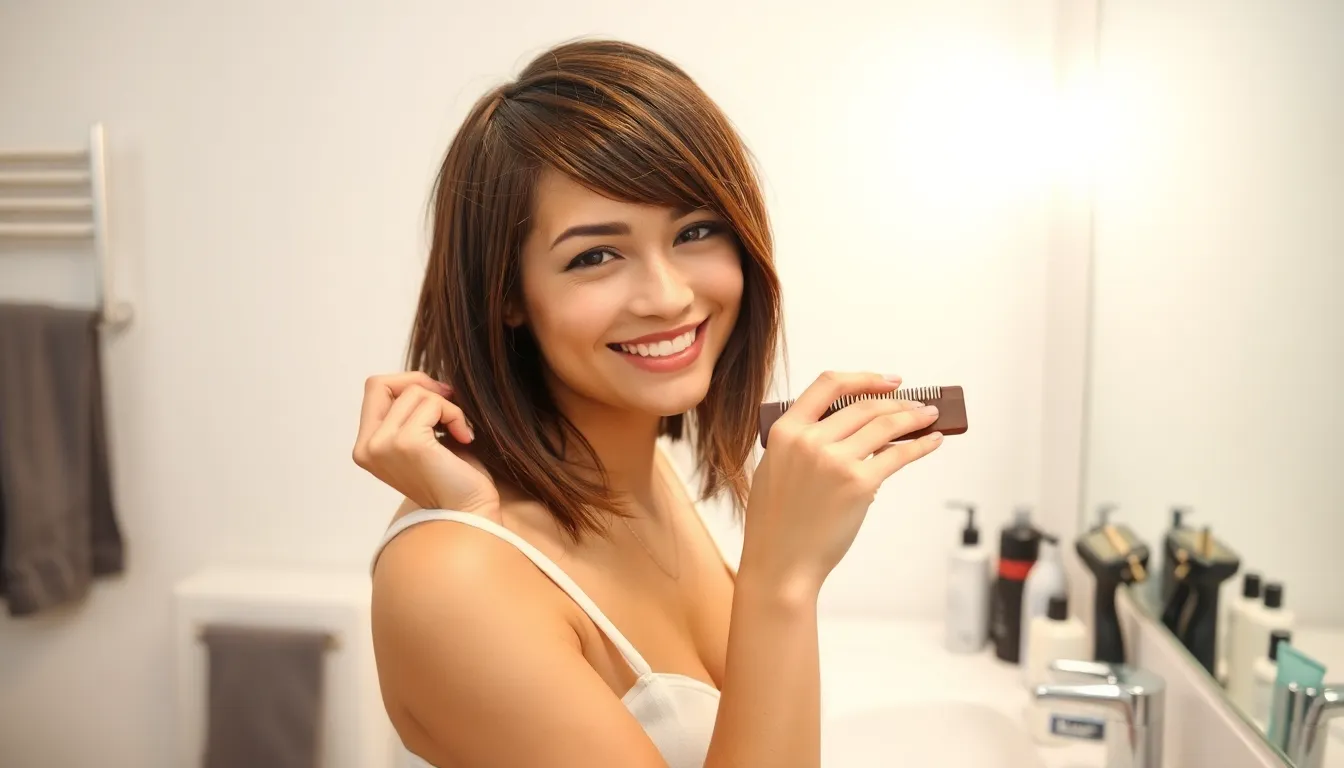
Creating beautiful long pixie hairstyles requires the right combination of professional tools and quality products. We’ll guide you through the essential equipment and products that transform your styling routine into a seamless experience.
Essential Styling Tools
Wide tooth combs serve as our foundation for gentle detangling without causing breakage to delicate pixie layers. Detangling becomes effortless when you start from the ends and work upward through each section.
Flat irons paired with precision combs deliver professional-level smoothness and control for sleek finishes. Tools like the Nume Megastar Flatiron provide the temperature control and plate quality needed for salon-worthy results at home.
High-quality hair dryers complete our essential toolkit by offering powerful airflow and heat distribution. Devices such as the Zuvi Halo Dryer help achieve smooth, professional finishes while minimizing heat damage to your pixie cut.
Must-Have Hair Products
Texturizing sprays create the foundation for volume and movement in long pixie styles. Sea salt formulas like Bumble and Bumble Surf Spray add natural texture while improving your hair’s natural body and grip.
Styling pastes and waxes provide the control and definition needed for polished pixie looks. Products like Oribe Rough Luxury Molding Wax offer flexible hold while adding sophisticated texture to longer layers.
Volumizing products amplify fine hair and create fuller-looking pixie cuts. Living Proof amp² Texture Volumizer builds body from roots to tips without weighing down delicate strands.
Mousse formulations enhance volume while providing styling support throughout the day. Kenra Platinum Thickening Mousse creates lift and helps maintain shape in longer pixie styles.
Finishing hairsprays lock in your styled look without creating stiffness or crunch. Calista Embellish Hairspray delivers flexible hold that moves naturally with your hair.
Specialty styling products like Bed Head Manipulator Matte add unique textures while maintaining workable hold. Color-protecting formulas such as Pureology Color Fanatic 21 Essential Benefits maintain vibrancy in treated hair while providing styling benefits.
Maintenance Schedule for Long Pixie Cuts

Maintaining your long pixie’s fresh appearance requires consistent care and strategic scheduling. We’ll guide you through the essential maintenance routine that keeps your cut looking salon-perfect.
How Often to Trim
Every 4-6 weeks is the optimal trimming schedule for long pixie cuts. Regular trims maintain the cut’s shape and prevent split ends from traveling up the hair shaft. This frequency encourages healthy hair growth while keeping your style fresh and defined.
Shape retention becomes crucial as your pixie grows out. Waiting longer than 6 weeks can cause your cut to lose its intended silhouette. We recommend booking your next appointment before leaving the salon to maintain consistency.
At-Home Care Between Salon Visits
Washing routines should focus on moisture retention using sulfate-free shampoos and hydrating conditioners. Deep conditioning treatments every two weeks enhance moisture levels and prevent breakage in shorter hair lengths.
Product application works best with minimal amounts to avoid weighing down your hair. Styling foams help mold your pixie without adding excess weight that can flatten your cut’s natural volume.
Heat protection becomes essential when using styling tools on shorter hair. Apply heat protectant before using any heated tools to shield your hair from damage and maintain healthy texture.
Dry shampoo usage between washes revitalizes your style while reducing oil buildup at the roots. This extends the time between washes and maintains your pixie’s fresh appearance.
Nutritional support through a balanced diet rich in vitamins and minerals promotes healthy hair growth. Keeping your scalp and hair ends properly hydrated minimizes breakage and supports your cut’s overall health.
Daily styling practices should include gentle finger styling and minimal manipulation to preserve your cut’s shape. Establishing this consistent routine maintains both the health and style of your long pixie between professional appointments.
Conclusion
We’ve explored the versatility and appeal of long pixie hairstyles showing how they offer the perfect balance between low-maintenance styling and creative expression. From classic side-swept styles to bold asymmetrical cuts these looks continue to dominate the hair scene for good reason.
The beauty of long pixie cuts lies in their adaptability to different hair textures face shapes and personal styles. Whether you’re drawn to sleek straight edges textured layers or colorful highlights there’s a long pixie variation that’ll enhance your natural features.
Remember that achieving your ideal long pixie look requires the right tools products and maintenance routine. With regular trims proper styling techniques and quality hair care you’ll keep your cut looking fresh and polished.
We’re confident that long pixie hairstyles will remain a timeless choice for those seeking sophistication with an edge.
Frequently Asked Questions
What is a long pixie hairstyle?
A long pixie hairstyle features hair lengths ranging from 2 to 4 inches with short back and sides and longer layers on top. It combines the low-maintenance benefits of short hair with enough length for various styling options, offering versatility through graduated layers, asymmetrical elements, and face-framing pieces.
How often should I trim my long pixie cut?
You should trim your long pixie cut every 4-6 weeks to maintain its shape and prevent split ends. Regular maintenance is essential to keep the style looking fresh and intentional, especially for asymmetrical cuts or undercut details that require precise shaping.
Can long pixie cuts work with curly hair?
Yes, long pixie cuts work beautifully with curly hair. They celebrate natural texture while providing manageable length and volume. Point cutting techniques enhance curl patterns, and strategic layering maintains volume and shape. Use curl-defining creams and sulfate-free products for best results.
What styling products do I need for a long pixie?
Essential products include texturizing sprays for volume, styling paste for control, volumizing products for fine hair, and light-hold hairspray. For curly pixies, use curl-defining creams and leave-in treatments. Always apply heat protectant when using styling tools to prevent damage.
Do long pixie cuts suit all face shapes?
Yes, long pixie cuts can be customized for all face shapes. Oval faces benefit from balanced proportions, heart-shaped faces get softened features with side-swept bangs, round faces gain vertical length from longer layers, and square faces are softened with wispy, face-framing pieces.
How do I style a textured long pixie cut?
Use a round brush while blow-drying to create volume, apply texturizing spray to damp hair, and scrunch with your fingers. For added texture, use dry shampoo at the roots and styling cream on the ends. Avoid over-styling to maintain the natural, effortless look.
Can I add color to my long pixie cut?
Absolutely! Color transforms long pixie cuts by adding dimension and enhancing movement. Popular options include balayage highlights, ombre effects, and monochromatic shading. Use sulfate-free shampoos and focus on hydration to maintain color vibrancy and prevent fading.
How do I grow out a long pixie cut?
Growing out a pixie requires patience and strategic styling. Schedule regular trims to maintain shape, use styling products to manage texture, experiment with different parts, and consider accessories during awkward growth phases. The process typically takes 6-12 months to reach medium bob length.
What’s the difference between a regular pixie and a long pixie?
A long pixie has more length overall (2-4 inches) compared to a traditional pixie’s 1-2 inches. This extra length provides more styling versatility, allows for face-framing layers, and offers easier maintenance while still keeping the edgy, modern appeal of shorter cuts.
Are long pixie cuts high maintenance?
Long pixie cuts are relatively low maintenance compared to longer hairstyles. They require regular trims every 4-6 weeks and daily styling takes just 5-10 minutes. Use minimal products to avoid weighing down the hair, and embrace the natural texture for an effortless, chic look.
